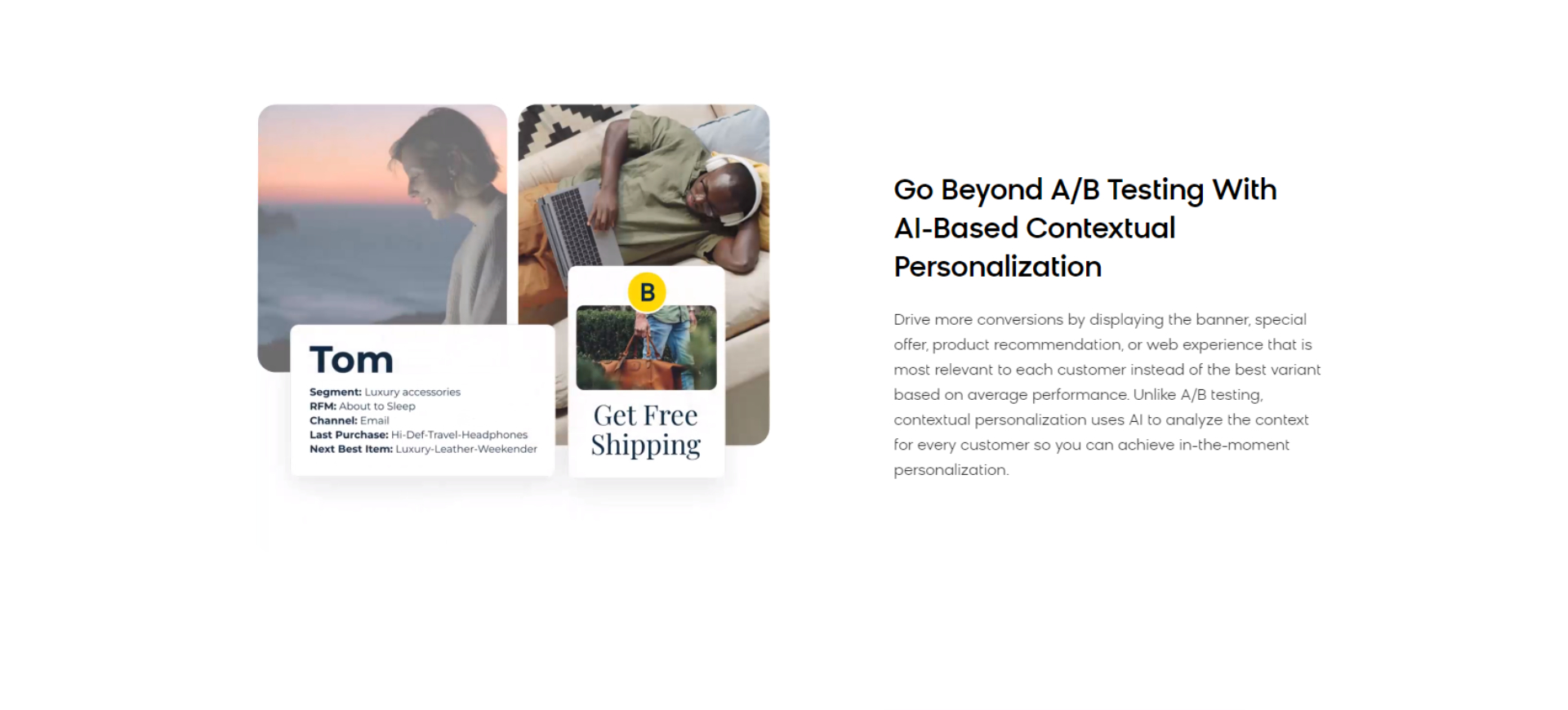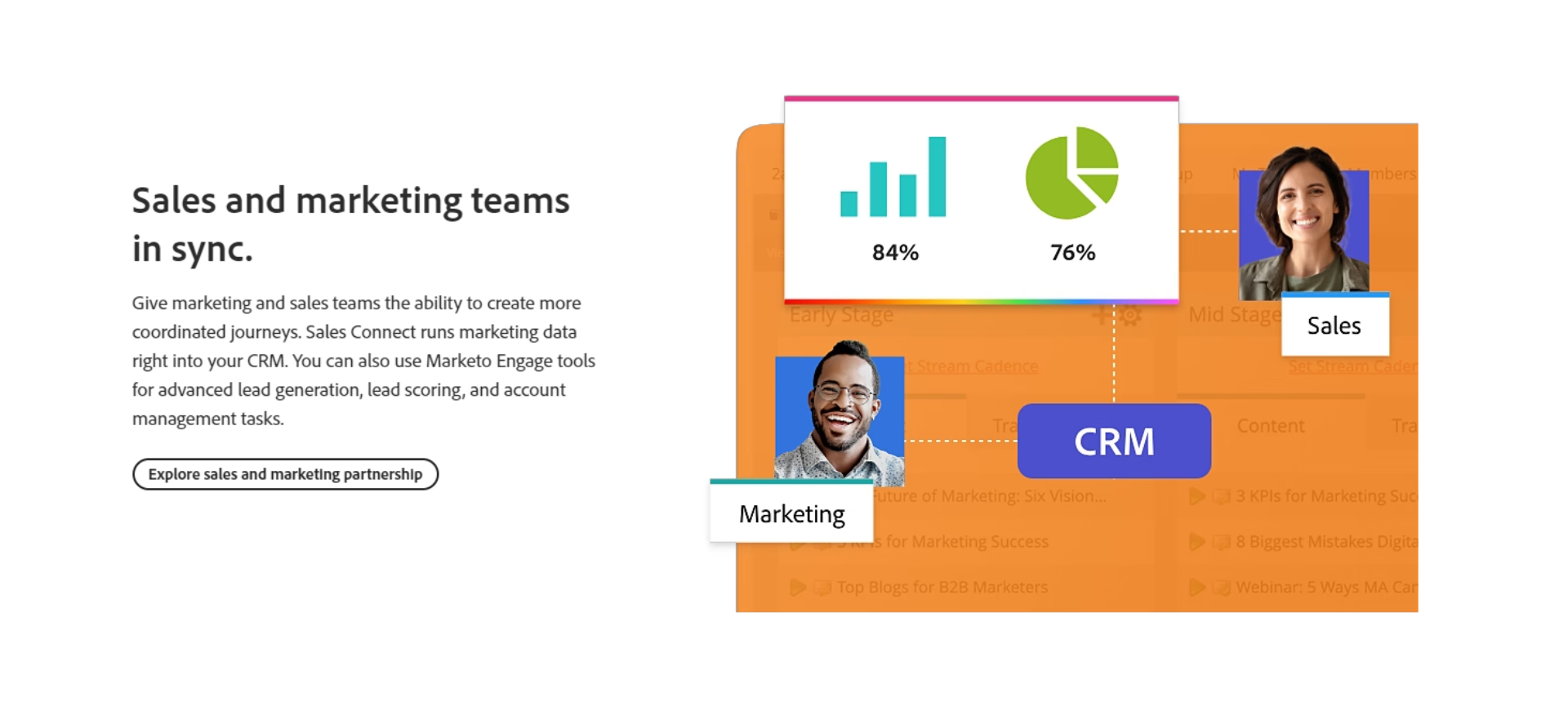Tools used in marketing automation
Marketing automation is the process of automating marketing activities using dedicated tools and technologies. This process allows for automation of many marketing processes, including sending email campaigns or managing company profiles on social media. Marketing automation enables customisation of marketing messages on the basis of customer preferences, which helps to build long-term relationships with customers and convert website visitors into a group of loyal customers.
It is crucial to learn about the characteristics of our target group before we start marketing automation. All of the information about users are typically collected from registration forms, surveys and various analytical tools. This data helps us to increase the effectiveness of our actions and customer engagement. Below we have described some of the most popular applications of marketing automation and tools that help to implement them.
1. Sending personalised email campaigns
Marketing automation solutions allow for sending personalised email campaigns that are suited based on individual preferences and users behaviour. For example if users were browsing products from the sports footwear category, they may receive email with recommended products from this category, even exactly the ones they viewed. If users add items into their basket but don’t complete the purchase, they can receive a reminder about abandoned carts, encouraging customers to finalise their order. One of the most popular solutions that offers emails adjusted to various types of transactions is Mailchimp.

Personalised email is a step forward well-known mass mailing. Emails that are tailored to real interest of users will for sure attract more attention and facilitate sales results. On the other hand mass mails will be more suitable to reach the large number of recipients, for example to inform them about upcoming special offers.
1. Lead nurturing
Lead nurturing involves building long term relationships with potential and existing customers. In case of individuals who show initial interest in our offer we want to catch their attention, provide essential information solving their problems and eventually encourage them to use our offer. In order to do this, we can automate delivery of marketing content thanks to which we can convince users to subscribe to our newsletter, download e-book or take part in webinars. Lead nurturing process consists of the following steps:
- Define your target audience - as it was already mentioned learning about your target group increases the effectiveness of our marketing activities. Collect as much information about individuals who are in your target audience. Identify their needs and expectations.
- Create valuable content - Provide potential customers with content that will be really useful, the content that will be interesting and answer pressing questions.
- Build engagement - convince your current and potential customers to interact, for instance by adding comments or reactions to your posts. Create surveys, ask questions and invite users to discussion.
- Personalise - even though your customers have similar features and expectations they still need an individual approach. Take into account that individuals who are before the decision about collaboration will have different needs than those who have been working with you for several years.
- Automate - Use tools for automating the newsletter, emails or adding posts in social media (this solution will be described in the next point).
Effective lead nurturing requires time and significant commitment. After all, efficient communication with customers requires regular actions and fast reactions. However, the result has significant influence on the company's reputation and building a loyal customer base.
One of the platforms that offer lead nurturing automation is Drip. It is dedicated mainly to the e-commerce sector. Thanks to this platform we can create communication streams with personalised content, do lead scoring (described in point 5) and analyse our results.

3. Social media marketing
When publishing content on social media we have to keep appropriate frequency and regularity. If we care about the advertisement on social media, usually posting on one platform is not sufficient. It is advisable to post on many platforms like Facebook, Instagram, LinkedIn, Google My Business or Twitter. Apart from copying and pasting the text, sometimes we need to adjust the size of graphics as well. The timing of posting is also important - you should determine this based on your follower;s active hours and type of content you are sharing. Sometimes it is hard to find time for all of this. Very helpful can be tools used for the automatic posting in social media on a few platforms at the same time. Thanks to them we can save much time needed for regular posting content on many platforms.
One of the most popular tools used for social media automation is Hootsuite. It enables planning posts on many platforms, answering on DMs, analysing results or team managing.

4. Dynamic website personalisation using AI
It is obvious that we want to adjust the website to the preferences of our industry and target group. Based on these we choose colour scheme, graphics, category layoutse, etc. Dynamic personalisation of the website includes adjusting the website to specific individuals who visit our website or online store. By using appropriate tools the website collects information about users, for example their age, gender, location or which tabs and products they have browsed. This helps identify their preferences and needs, on which are based the structure of the website and displayed content. In the case of online stores, this tool helps to analyse the data about customers perforations and purchase history then it recommends products and services that best suit them. Some of the tools also offer dynamic personalisation of a web browser, to display search results on the basis of users interests.
One of the solutions that offer automated personalisation of websites and online stores is Bloomreach. This platform contains many AI-powered tools for marketing automation.

5. Automatic interactions
Ensuring fluent communication with potential and current customers is extremely important. However, we aren’t always able to provide immediate feedback, especially when customers contact us after our working hours or if the number of inquiries exceed our work capacity. A good solution for this may be a chat with virtual assistants, who can instantly provide basic information, answer basic questions and perform routine tasks. Accelerating integration with customers will have a positive impact on their experience with our website or online store. In case of more complex interactions, it is good to provide contact with human operators. Apart from dynamic development of artificial intelligence, bots may still make mistakes in interpretation of users' inquiries.
For instance. Chatfuel platform enables implementing chat on Facebook, Messenger, Instagram and WhatsApp. It allows for creating a virtual assistant, who can answer questions, provide information, collect data and redirect users to customer service if needed.

6. Lead scoring
Lead scoring allows for assessing potential customers based on their behavoiur and interactions on the website. Marketing automation offers in this range automatic scoring for performed activities, such as opening email, entering a website, downloading e-book, attending webinars, etc. The more customers are active the more are chances for conversion. Leads ranking enables their proper division and tailoring efficient messages to each group. It helps to distinguish customers who are ready to finalise the purchase of our services or products and can be redirected to the sales department.
Marketo is one of the tools that have a lead scoring module. It allows for defining criteria for giving points, creating rules of scoring and automating activities based on collected results.

Each of the above solutions allows significant automation of marketing activities in accordance to adjustment to customers needs. These tools not only help to save time spent on marketing activities, but also enables their personalisation. Thanks to this the customers instead of receiving another mass email that may be taken as spam, can get valuable information, suited to their real interests. The huge advantage of marketing automation is its flexibility, which means that we can get to a wider audience by running campaigns on a larger scale. Marketing automation significantly influences the effectiveness of marketing activities and the level of customer engagement. Many tools for marketing automation provide the possibility of collecting, analysing and reporting data. Thanks to this we can monitor the effects and efficiency of our campaigns and also check the latest trends, which can help in optimising marketing strategy.
While choosing the solution for marketing automation take into account its price and possibility of integration. It is common that one platform offers various solutions for marketing automation. Whenever possible use a demo version. Thanks to this you can check if a chosen solution is easy to use. What’s more, you should read reviews of other users to check how this solution worked for them.

